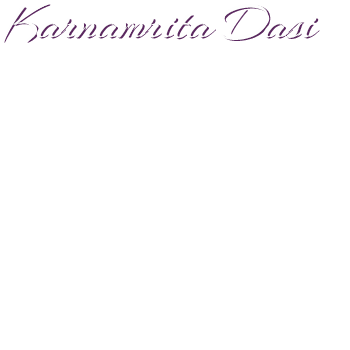Dhrupad (Hindi: ध्रुपद) is a vocal genre in Hindustani classical music, said to be the oldest still in use in that musical tradition. Its name is derived from the words “dhruva” (fixed) and “pada” (words). The term may denote both the verse form of the poetry and the style in which it is sung.
Abul Fazl, courtier and chronicler at the court of the Emperor Akbar, defines the dhrupad verse form in his Ain-e-Akbari as “four rhyming lines, each of indefinite prosodic length.” Thematic matter ranges from the religious and spiritual (mostly in praise of Hindu deities) to royal panegyrics, musicology and romance.
The earliest source that mentions a musical genre called Dhrupad is Ain-i-Akbari of Abu Fazl (1593). Later works attribute much of the material to musicians in the court of Man Singh Tomar (fl. 1486-1516) of Gwalior. In these accounts from the Mughal court Dhrupad is portrayed as a musical form which is relatively new; and according to Sanyal, most sources agree that Drupad owes its origin to the court of Man Singh Tomar. There is reference to Dhrupad in Bharat’s Natya Shastra, commonly dated to the 1st Century AD, and even in Sangit Ratnakar, a 13th Century text, taken as authoritative. Ravi Shankar states that the form appeared in the fifteenth century as a development from the prabandha, which it replaced. Under Mughal (“Mogul”) rule it was appropriated as court music.
However the musical background of dhrupad is commonly thought to have a long history, traceable back to the Vedas themselves. The Yugala Shataka of Shri Shribhatta in the Nimbarka Sampradaya, written in 1294 CE, contains lyrics of similar fashion. Swami Haridas (also in the Nimbarka Sampradaya), the guru of Tansen, was a well known dhrupad singer.
The 18th Century saw the beginning of a great decline of dhrupad singing. A newer genre, khyal, which had coexisted with dhrupad for a couple of centuries, and which emerged partly as a reaction against so-called ‘nibaddha’ or pre-composed music, gained popularity at dhrupad’s expense, placing fewer constraints on the singers and allowing greater improvisation and displays of virtuosity rare in dhrupad. Also, new instruments were being developed – the sitar and the sarod – that were not suited to the slow tempo and low register favoured by dhrupad so that dhrupad instrumental also began to lose ground. Only a few families carried on the tradition.
In 1960 the French ethnomusicologist Alain Daniélou invited Nasir Moinuddin and Nasir Aminuddin Dagar (the senior Dagar Brothers) to perform in Europe. Their concerts were successful and, upon the untimely demise of Nasir Moinuddin in 1966, his younger brothers Nasir Zahiruddin and Nasir Fayazuddin continued. The Dagars toured widely and recorded. Coinciding with growing foreign interest in Indian music, the Dagarvani-revival helped breathe new life into a few other families of dhrupad singers. Today, dhrupad enjoys a place as a well-respected but not widely popular genre, no longer on the brink of extinction.
Dhrupad as we know it today is performed by a solo singer or a small number of singers in unison to the beat of the pakhavaj or mridang rather than the tabla. The vocalist is usually accompanied by two tanpuras, the players sitting close behind, with the percussionist at the right of the vocalist. Traditionally the only other instrument used was the Rudra Veena. Some artists have used other instruments. Preferably, such instruments should have a deep bass register and long sustain.
Like all Indian classical music, dhrupad is modal and monophonic, with a single melodic line and no chord progression. Each raga has a modal frame – a wealth of micro-tonal ornamentations (gamaka) are typical.
The text is preceded by a wholly improvised section, the alap. The alap in dhrupad is sung using a set of syllables, popularly thought to be derived from a mantra, in a recurrent, set pattern: a re ne na, té te re ne na, ri re re ne na, te ne toom ne (this last group is used in the end of a long phrase). Dhrupad styles have long elaborate alaps, their slow and deliberate melodic development gradually bringing an accelerating rhythmic pulse. In most styles of dhrupad singing it can easily last an hour, broadly subdivided into the alap proper (unmetered), the jor (with steady rhythm) and the jhala (accelerating strumming) or nomtom, when syllables are sung at a very rapid pace. Then the composition is sung to the rhythmic accompaniment: the four lines, in serial order, are termed sthayi, antara, sanchari and aabhog.
Compositions exist in the metres (tala) tivra (7 beats), sul (10 beats) and chau (12 beats) – a composition set to the 10-beat jhap tala is called a sadra while one set to the 14-beat dhamar is called a dhamar. The latter is seen as a lighter musical form, associated with the Holi spring festival.
Alongside concert performance the practice of singing dhrupad in temples continues, though only a small number of recordings have been made. It bears little resemblance to concert dhrupad: there is very little or no alap; percussion such as bells and finger cymbals, not used in the classical setting, are used here, and the drum used is a smaller, older variant called mrdang, quite similar to the mridangam.



